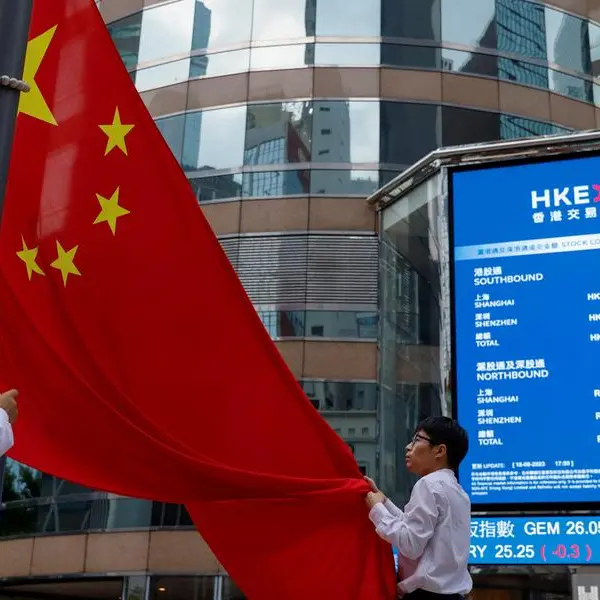PHOTO
Oil, miniatures of oil barrels and U.S. dollar banknote are seen in this illustration taken, June 6, 2023. REUTERS/Dado Ruvic/Illustration
LONDON - U.S. crude oil inventories have depleted faster than normal over the last four weeks – squeezing hedge funds running short positions, keeping spot prices firm and the futures curve in a steep backwardation.
But with most short positions now repurchased this source of support has melted away and both spot prices and calendar spreads have retreated in recent trading sessions.
Commercial crude inventories across the United States depleted by 24 million barrels between June 21 and July 19, according to the Energy Information Administration (EIA).
Crude inventories normally deplete at this time of year as refineries ramp up processing to meet demand for gasoline during the summer holiday driving season.
But the drawdown in crude stocks this year has been more than twice as fast as the average over the previous ten years.
As a result, crude inventories were 8 million barrels (-2% or -0.15 standard deviations) below the seasonal average on July 19.
The draw more than eliminated a surplus of 6 million barrels (+1% or +0.12 standard deviations) four weeks earlier.
Chartbook: U.S. crude stocks and prices
Most of the stocks were taken from refineries and tank farms along the Gulf of Mexico (-17 million barrels) and around the delivery point for the NYMEX WTI futures contract at Cushing in Oklahoma (-3 million).
The Gulf Coast and the Cushing hub are the parts of the U.S. petroleum refining system most closely integrated with international markets.
The drawdown more than halved the seasonal surplus on the Gulf Coast to 11 million barrels (+5% or +0.34 standard deviations) from 25 million barrels (+10% or +0.79 standard deviations) four weeks earlier.
And it slightly widened the deficit at Cushing to 11 million barrels (-26% or -0.69 standard deviations) from 10 million barrels (-22% or -0.66 standard deviations).
BULLISH SENTIMENT
The depletion of crude stocks has been accompanied by an influx of investment money into futures contracts based on U.S. crude prices anticipating a further increase in prices.
Hedge funds and other money managers purchased the equivalent of 79 million barrels of futures and options in the NYMEX and ICE WTI contracts over the four weeks ending on July 16.
Purchases were faster than for Brent, where fund managers bought the equivalent of 44 million barrels, according to records filed with regulators and exchanges.
In consequence, fund managers had amassed a combined position of 239 million barrels (48th percentile for all weeks since 2013) in WTI compared with only 184 million (33rd percentile) in Brent.
The number of hedge fund short positions betting on a fall in WTI prices had been squeezed down to just 21 million barrels on July 16 from 41 million four weeks earlier and as many as 96 million in early May.
Inventory depletion and the associated short squeeze have forced the NYMEX WTI futures curve into a relatively steep backwardation.
The three-month calendar spread has been in an average backwardation of almost $3 per barrel so far in July compared with less than $1.50 in May.
Even so, the fund buying and backwardation have looked a little overdone given the relatively moderate stock depletion so far and the limited rise in spot prices.
OVERHEATED MARKET?
Cushing inventories 20% below the seasonal average have been associated with much narrower backwardations in the past making the market look a bit overheated.
Similarly, backwardations of this scale would normally be associated with a rising spot price trend; instead prices have fallen slightly compared with three months ago.
Perhaps traders anticipate a deliberate raid on deliverable inventories at Cushing in the next few weeks – reprising the drawdown between July and September 2023.
The squeeze on Cushing inventories in the third quarter of 2023 sent spot prices surging to almost $94 per barrel and the backwardation flying to more than $6.
Perhaps they also anticipate U.S. crude production will be disrupted by the forecast for an unusually large number of hurricanes of higher-than-normal intensity.
Since the start of June, traders have been positioning themselves for a relatively large depletion of global petroleum inventories over the third quarter.
But doubts about another physical and futures squeeze seem to have crept in, with spot prices and spreads falling to multi-week lows in recent trading sessions.
Hedge fund short positions in NYMEX WTI have already been reduced close to the lowest level over the last decade so there is not much scope to squeeze them further.
Short positions are just 6 million barrels above the lowest-ever level since 2013, removing one of the major supports for prices and spreads.
U.S. oil prices are unlikely to rebound much in the next two months – unless there is another depletion of deliverable supplies at Cushing and a broader drawdown on the Gulf Coast.
John Kemp is a Reuters market analyst. The views expressed are his own. Follow his commentary on X https://twitter.com/JKempEnergy
(Editing by Mark Potter)





















